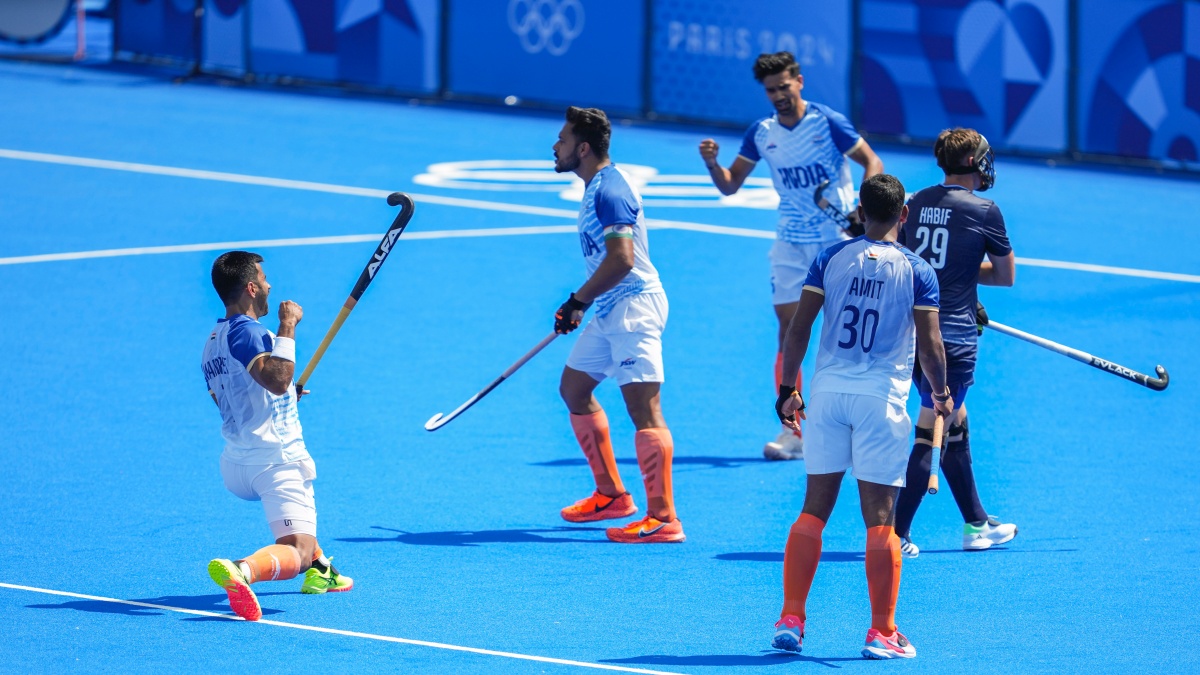Modern hockey places a premium on two elements – converting penalty corners and defending them. More than anything else that happens on the hockey pitch, these two features determine the results of most encounters. Restricting the number of penalty corners conceded is one of the main requirements from the deep-defenders who try to avoid committing infringements even in crowded circles.
Paris Olympics: News, schedule, medals tally and more
Speaking about the inequalities of life: the defenders certainly do not get a fair deal.
Compared to the most minor infringement leading to a penalty corner being conceded, the strikers enjoy a luxurious life. They are supposed to find an angle and slam the ball into the boards, but coaches of all hues tell them that just pushing the ball on to the foot of a defender is good enough. Some strikers no long bother to even have a look at the goalkeeper, leave alone the citadel that he guards.
Merely doing a small dribble or a body feint and then pushing the ball on to the foot of a defender amounts to a job well done. It is thereafter left for the drag-flicker, or those involved in a set-piece execution, to complete the job.
Add to this the strikers pouncing on the rebound.
The defence of penalty corners is a task on which all coaches work hard. Yet, much more time is spent on devising strategy to convert penalty corners. After the sparkle of open field play has been applauded by the fans, execution of penalty corners becomes the most critical element.
There is immense excitement among Indian hockey fans as their team seeks an encore of the Tokyo medal – India’s first in the Olympic Games in 41 years. But misfiring penalty corners have cast a massive shadow on India’s campaign in Paris.
Converting merely four penalty corners out of 27 in four preliminary league outings, Tokyo Olympics bronze medallists India are among the least effective nations in scoring goals from penalty corners.
As the tournament heads to the knockouts, the focus of these Olympics is on India’s dismal penalty corner conversions. The scoring graph for Harmanpreet Singh has marked a downward slide since India’s bronze medal at Tokyo – and several observers have blamed it on India’s solitary dependence on their captain.
Being the captain and the first-choice penalty-corner shooter, Harmanpreet does not have the luxury of using the rolling substitution rule. While most players benefit from it to stay fresh and use short breaks to rejuvenate themselves in hot or humid conditions, Harmanpreet rarely has that option.
Even in the sweltering temperatures of the summer in Paris, Harmanpreet is compelled to stay on the pitch most of the 60-minute duration. There is so much dependence on him that the Indian skipper has been bogged down not just by the weight of expectations, but by the multi-faceted roles assigned to him. All of these are forcing him to stay on the turf for most of the time – match after match.
In 2016, India were elated at the arrival of the prodigious Harmanpreet, whose penalty corner drag-flicks during the Azlan Shah Cup tournament in Ipoh (Malaysia) made such a mark that India’s then chief coach, Dutchman Roelant Oltmans, had no hesitation in recommending his brisk promotion into the Olympic squad for Rio de Janeiro.
Within a few months of making his senior debut, Harmanpreet was on view at the 2016 Olympics, where India’s journey ended in the quarterfinals against eventual silver medallists Belgium. But, the world had taken note of the rasping drag-flicks that flowed from his stick, and it gave India the option of alternating him with his senior Rupinderpal Singh.
At the Tokyo Olympics, India’s effectiveness in penalty corners was the result of these two drag-flickers of equal calibre being on the pitch. Eventually, Rupinderpal emerged as the top scorer with nine goals.
After Rupinderpal’s retirement, virtually the entire burden of penalty corner flicks has been thrust upon Harmanpreet, whose execution strategy is being consistently analysed by rival coaches. Even though the team management continues to show Amit Rohidas as an onfield option, how often does he come into the frame?
In four group matches of the Paris Olympics thus far, India have earned 27 penalty corners, from which Harmanpreet took 24 shots. The total allocation for Rohidas has been three penalty corners - two versus Ireland and one versus Belgium.
Since it is evident to the rivals that Harmanpreet will take most shots, his effectiveness has been curbed. The rival defenders are no longer required to even have a look at another player on top of semi-circle. It is taken for granted that the penalty corner push will be aimed at Harmanpreet and the defenders play accordingly.
This trend started with the 2023 World Cup hosted by India, where Harmanpreet failed to be a forceful threat to the rivals. Rupinderpal had already retired by then. Harmanpreet’s ineffective flicking was one of the reasons for India failing to even make the quarterfinals grade.
Besides his loneliness as a penalty corner flicker, Harmanpreet is also the target of his execution skills being studied threadbare by the rivals on a daily basis. To stay relevant, penalty corner flickers nowadays are required to innovate on a regular basis – to develop new skills and flicking tactics from one tournament to the next.
Hiding tactics for important games being a feature of modern hockey, Indian fans are eager to know if Harmanpreet still has a secret element in his penalty corner drills!


)
)
)
)
)
)
)
)
)



